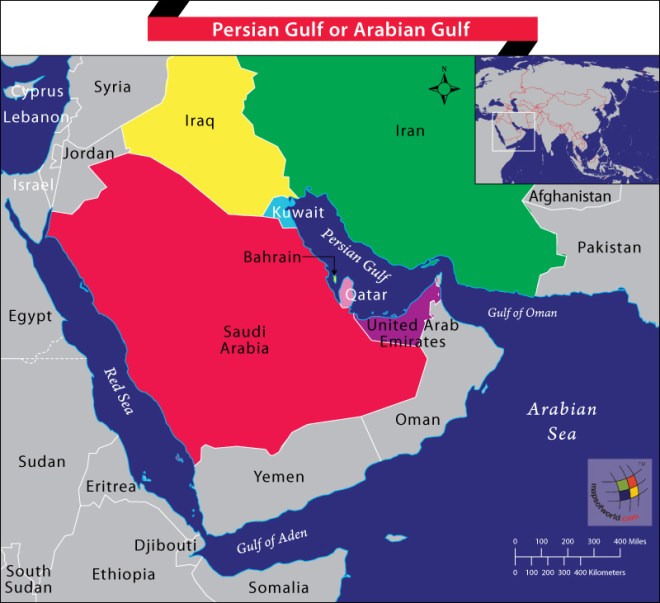Focus: GS-II International Relations
Introduction
- The Persian Gulf is a mediterranean sea in Western Asia and is surrounded by eight countries – Bahrain, Iran, Iraq, Kuwait, Oman, Qatar, Saudi Arabia, and the United Arab Emirates.
- What is common to these 8 countries is that they are major producers of crude oil and natural gas, and thereby contributing critically to the global economy.

A framework
- For eight decades prior to 1970, this body of water was a closely guarded British lake, administered in good measure by imperial civil servants from India. When that era ended, regional players sought to assert themselves. Imperatives of rivalry and cooperation became evident.
- The Iraq-Iran War enhanced U.S. interests and role and after struggles it was left to the Security Council to explore ‘measures to enhance the security and stability in the region’.
The GCC and the U.S. link
- The war in Iraq by the U.S. in its effort to ‘contain’ the Iranian revolutionary forces met with success in some functional fields, was supplemented by the effort of the Arab states of the littoral (except Iraq) through the instrumentality of the Gulf Cooperation Council, or GCC (May 1981).
- The multilateral agreement on Iran’s nuclear programme agreed to by western powers, being disowned unilaterally by the U.S. under Trump’s Presidency, along with other decisions, has taken the region to the brink of an armed conflict.
- Perceptions of declining U.S. commitment to sub-regional security have been articulated in recent months amid hints of changing priorities.
An evolving transformation
- The divisions within the GCC are aggravated by the global economic crisis, the immediate and long-term impact of COVID-19 on regional economies, the problems in the Organization of the Petroleum Exporting Countries (OPEC), and the decline in oil prices.
- OPEC is also becoming irrelevant as oil policy moves to a tripartite global condominium.
India’s ties
- The bilateral relationship, economic and political, between India and the GCC has blossomed in recent years.
- This is well reflected in the bilateral trade of around $120 billion and remittances of almost $50 billion from a workforce of over nine million.
- GCC suppliers account for almost 35% of our crude imports.
- In addition, Saudi Aramco is reported to take a 20% stake in Reliance oil-to-chemicals business.
- The relationship with Iran, complex at all times and more so recently on account of overt American pressure, has economic potential and geopolitical relevance on account of its actual or alleged role in Pakistan and Afghanistan.
-Source: The Hindu





